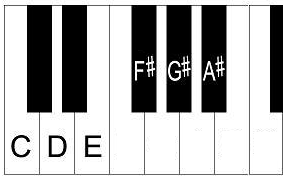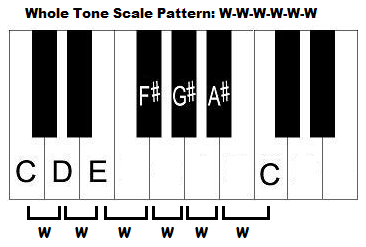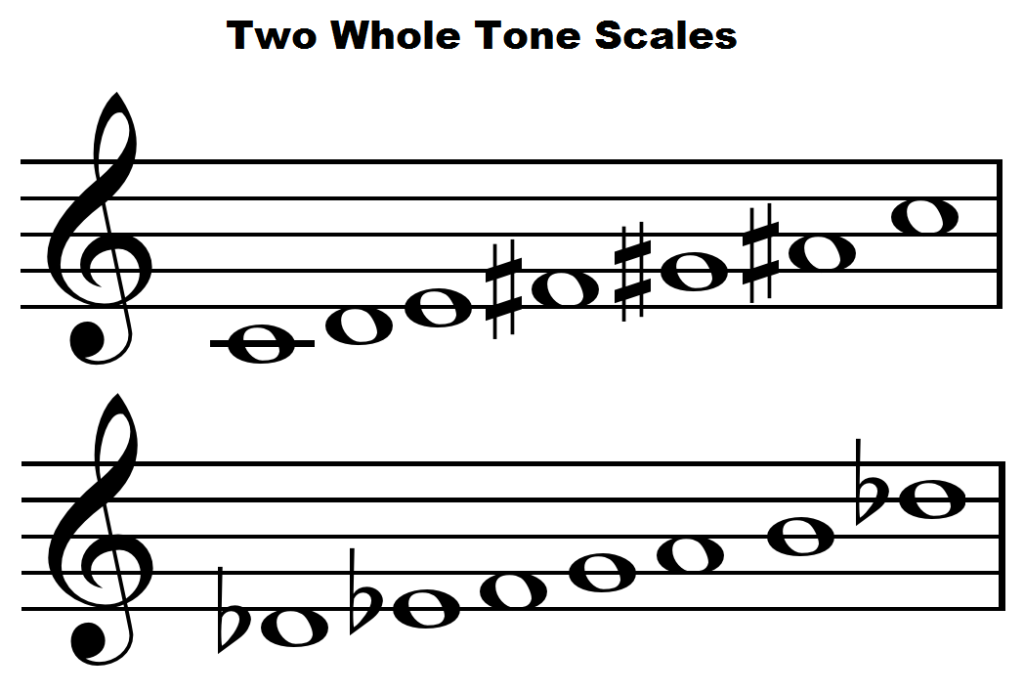 In this lesson we will learn all about the whole tone scale. This is a scale progressing entirely by whole tones. It consists of 6 tones. The sound of the scale is often described as “dreamlike” or mysterious. It is used in Romantic and jazz music, for instance, the music of Thelonius Monk.
In this lesson we will learn all about the whole tone scale. This is a scale progressing entirely by whole tones. It consists of 6 tones. The sound of the scale is often described as “dreamlike” or mysterious. It is used in Romantic and jazz music, for instance, the music of Thelonius Monk.
Highly Recommended: Click here for one of the BEST piano/keyboard courses I’ve seen online.
The pattern for this scale is easy to remember because it consists entirely of whole tones (whole steps). Here’s the pattern: W-W-W-W-W-W (or whole tone, whole tone, whole tone, whole tone, whole tone, whole tone). In other words, you can start on any note and keep moving a whole tone (or whole step) higher till you reach the note you started on, one octave higher. 

The whole-tone scale, consisting entirely of whole tones is in contradistinction to the chromatic scale (which consists entirely of half steps or semitones), as well as diatonic scales like the major and minor scales which consist of semitones and whole tones.
There are really only two whole tone scales. Some theorists have classified them as WTO (whole tone O) and WT1 (whole tone 1). The notes of the first one, WT0 is C – D – E – F# – G# – A#, while the notes of the other scale are Db – Eb – F – G – A – B. 
The harmonic spelling of the notes is not important. You are free to use enharmonic equivalents. For instance, in the first example, instead of F# – G# – A#, you can write Gb – Ab – Bb.
Any transposition or mode will just duplicate the pitch contents of the scale. For example if you start on D, the notes of the scale will be D – E – F# – G# – A# – B – C. If you start on Eb, for example, the notes of the scale would be Eb – F – G – A – B – Db.
Whole Tone Scale Piano Fingerings
Here are the piano fingerings for this scale for 2 octaves.
For the first example above, which starts on C, referred to as WT0, the right hand fingering is 121234 1212345.
The left hand fingering is 321432 1214321.
For the second example which starts on Db, referred to as WT1, the right hand fingering is 231231 2312312.
The left hand fingering is 321321 3213213.
In terms of harmony, this scale is limiting. It is impossible to form major and minor chords and the only seventh chord we could create are the dominant 7th chord with a diminished 5th (C – E – Gb – Bb), or with the augmented 5th (C – E – G# – Bb). Triads built on scale tones are augmented.
This scale is usually related to the Impressionism period and to Claude Debussy (1862-1918).
To learn more about the whole tone scale, check out this Wikipedia page.
Learn how to build other scales on piano.